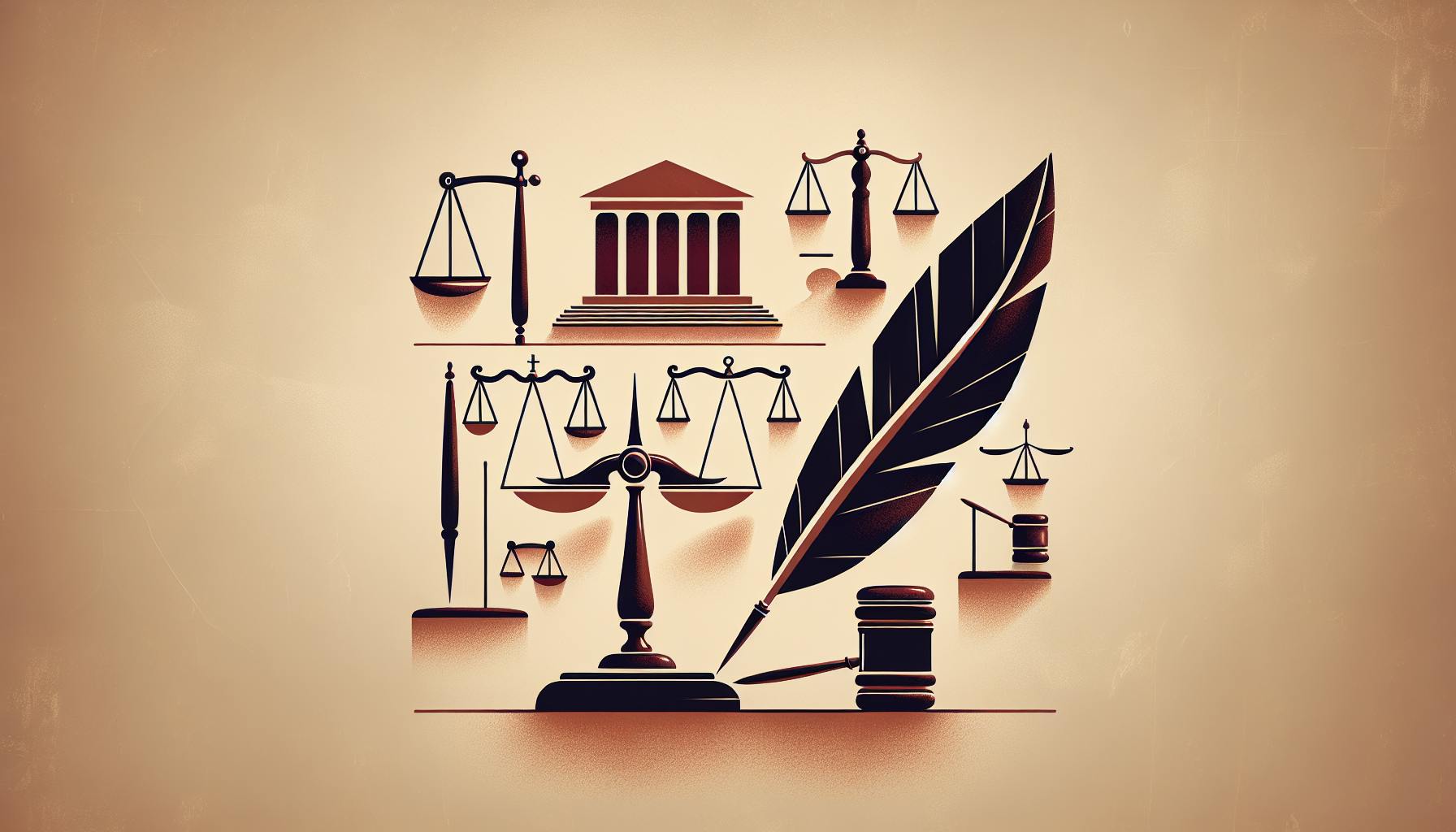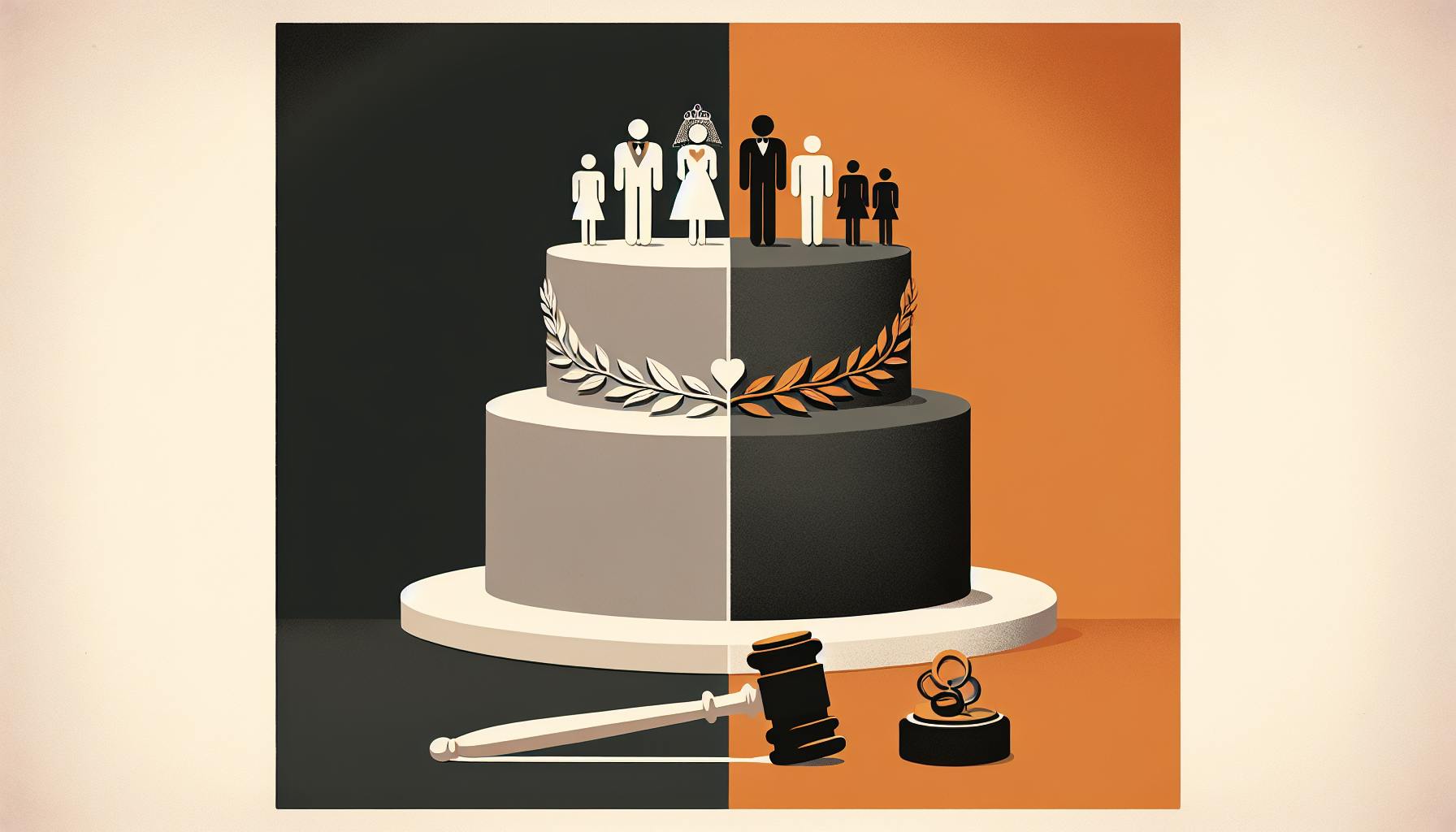Most would agree that slavery is an unacceptable violation of human rights that has caused immense suffering.
The 13th Amendment to the U.S. Constitution aimed to abolish this cruel institution, but its effects and limitations remain complex.
This article will provide an in-depth exploration of the 13th Amendment - from its origins and passage, to its judicial interpretations and ongoing legacy in contemporary society.
Introduction to the Thirteenth Amendment and the Abolition of Slavery
The Thirteenth Amendment, ratified in 1865, abolished slavery and involuntary servitude in the United States. This amendment marked a pivotal turning point in American history, reshaping the nation's legal and social landscape.
Tracing the Roots of Slavery in America
Slavery has a long, brutal history in what would become the United States. The Atlantic slave trade brought millions of enslaved Africans to British North America beginning in the 17th century. Slavery formed the foundation of the Southern plantation economy and persisted in some states until the passage of the Thirteenth Amendment.
The Road to Abolition: Key Events and Figures
Many events and figures paved the way for the Thirteenth Amendment's abolition of slavery. These include:
- The abolitionist movement, led by figures like Frederick Douglass, William Lloyd Garrison, and Harriet Tubman
- Abraham Lincoln's election as president in 1860 on an anti-slavery platform
- Lincoln's Emancipation Proclamation in 1863, freeing slaves in Confederate states
- The Union victory in the American Civil War in 1865
Deciphering the Amendment's Language and Intent
The Thirteenth Amendment clearly states: "Neither slavery nor involuntary servitude...shall exist within the United States." This unequivocally banned slavery and other forms of forced, unpaid labor. The Amendment aimed to guarantee personal freedom and outlaw human bondage.
Comparing Pre-Amendment Legislation and Compromises
Unlike previous compromises on slavery, the Thirteenth Amendment established abolition in the Constitution. Earlier legislation like the Missouri Compromise of 1820 and the Compromise of 1850 sought to placate both anti-slavery and pro-slavery factions, but did not ban slavery nationwide.
What does the 13th Amendment mean in simple terms?
The 13th Amendment, ratified in 1865, abolished slavery and involuntary servitude in the United States. Here is what it means in simple terms:
-
It made slavery and involuntary servitude illegal throughout the United States, except as punishment for a crime.
-
It freed all enslaved people in the Confederate states. This completed the Emancipation Proclamation, which had earlier freed enslaved people in rebelling states.
-
It eliminated slavery as an legally sanctioned economic system. This removed the legal basis for slavery that had existed in the United States for over 200 years.
-
It outlawed forced labor without pay to work off debts. This practice is known as peonage or debt slavery.
So in basic terms, the 13th Amendment ended slavery as a formal institution in America. It established that people cannot be considered legal property of others or be forced to work without pay. This was a major milestone in ensuring equal rights and liberties for all people under the Constitution.
What is the 13th Amendment case law?
The 13th Amendment, which abolished slavery in the United States, has been referenced in various court cases over the years to determine what constitutes "involuntary servitude".
One such case is UAW v. Wisconsin Employment Relations Board from 1956. In this case, the U.S. Supreme Court decided that court orders requiring striking workers to return to work do not violate the 13th Amendment.
The Court's reasoning was that because workers have the right to quit their jobs, being compelled to return to work during a strike does not amount to involuntary servitude. The key principles from the case are:
- Court orders forcing striking workers back to their jobs are not unconstitutional under the 13th Amendment
- Workers have the fundamental right to quit their employment
- As long as workers can quit, making them return to work during disputes does not qualify as involuntary servitude
So while the 13th Amendment abolished slavery and involuntary servitude, the Court ruled that this did not give workers the absolute right to strike without being compelled to return during labor disputes. As long as the option to quit remains available, such court orders are valid.
This case set a precedent on what constitutes involuntary servitude with regards to labor rights. It demonstrated how the 13th Amendment has been interpreted by courts to determine what crosses the line into uncompensated forced labor.
What did ratification of the Thirteenth Amendment mean?
The ratification of the Thirteenth Amendment in December 1865 abolished slavery and involuntary servitude in the United States, except as punishment for a crime. This was a monumental change, as it permanently freed over 4 million African Americans who had been enslaved, representing almost a third of the Southern population at the time.
Some key effects of the Thirteenth Amendment's ratification:
- Slavery was abolished nationwide, eliminating the legal concept of people as property. This overturned precedents like the Dred Scott decision.
- It outlawed forced labor without compensation. However, the convict leasing system emerged as a means to continue exploiting African American labor.
- The amendment nullified the Fugitive Slave Acts, ending the legal requirement to return escaped slaves.
- Formerly enslaved people gained some civil rights like the right to marry, own property, and testify in court. However, black codes restricted many basic freedoms.
- It laid the foundation for Reconstruction and the abolitionist movement to push for further civil rights and equality.
So in summary, while the Thirteenth Amendment was essential in outlawing slavery, its impacts were limited by racist state and local laws that emerged afterwards. The struggle for equality and civil liberties continued through Reconstruction, the civil rights movement, and persists today.
sbb-itb-585a0bc
What is the loophole of the 13th Amendment?
The 13th Amendment, ratified in 1865, abolished slavery in the United States. However, it contained one critical loophole - slavery and involuntary servitude could still be used as punishment for a crime.
Specifically, the 13th Amendment states:
"Neither slavery nor involuntary servitude, except as a punishment for crime whereof the party shall have been duly convicted, shall exist within the United States, or any place subject to their jurisdiction."
This clause enabled the exploitation of prison labor systems after the Civil War. Many former slave states used the loophole to continue forced unpaid labor of prisoners, particularly targeting African Americans through racist laws and policing policies.
Some key issues that emerged from the loophole in the 13th Amendment:
- Convict Leasing System: States leased out prisoners to private companies for manual labor. Prisoners faced inhumane working conditions with high mortality rates.
- Chain Gangs: Groups of prisoners chained together to do hard labor like road and railroad construction.
- Peonage: A system of debt slavery where workers were unable to repay debts and sentenced to involuntary labor.
- Overpolicing of Minorities: Racially-biased policing and sentencing led to higher minority incarceration rates even for minor crimes. Their unpaid prison labor was exploited.
So while the 13th Amendment abolished the institution of chattel slavery, its exception clause enabled systems of forced, unpaid prison labor that disproportionately affected minorities. This loophole has had long-lasting impacts on the criminal justice system and racial inequities in the United States.
Legislative Journey of the Thirteenth Amendment
The Thirteenth Amendment went through a long legislative process during a turbulent time in American history. Its journey reflects the debates around slavery and human rights that defined the Civil War era.
Debate and Passage in the U.S. Senate and House of Representatives
The Thirteenth Amendment originated in 1864, when the Senate passed an abolition bill introduced by Senator Lyman Trumbull. However, the House did not pass it before the session adjourned. When the new Congress convened in 1865, the Amendment was reintroduced and faced extensive debate. Opponents argued it was an overreach of federal power, while supporters maintained it was necessary to end slavery nationwide. Several compromises were proposed, but none succeeded. Finally, on January 31, 1865, the House passed the Amendment with the requisite two-thirds majority, sending it to the states for ratification.
State-by-State: The Ratification Process
The Amendment needed 27 of the 36 states' approval to be added to the Constitution. Northern states quickly ratified it, but Southern states largely refused. As the Civil War ended, ratification became a requirement for readmittance of Confederate states into the Union. However, some Southern states still rejected the Amendment. The process dragged on throughout 1865 as the nation struggled toward Reconstruction. Finally, on December 6, 1865, Georgia became the 27th state to ratify the Amendment, formally abolishing slavery nationwide.
Presidential Endorsement and Certification
President Abraham Lincoln firmly endorsed the Amendment before his assassination in 1865. His successor President Andrew Johnson also supported it despite opposing other civil rights initiatives during Reconstruction. On December 18, 1865 Johnson officially certified the Thirteenth Amendment's passage into law, declaring all slaves in rebel states free and marking the end of legal slavery in America after nearly 250 years. The next day, December 19, became known as Emancipation Day.
Immediate and Long-Term Effects of the Thirteenth Amendment
The Thirteenth Amendment had profound immediate and long-term impacts on American society. By abolishing slavery, it dismantled a harmful institution and took the first step towards realizing the founding ideals of equality and liberty for all. However, the road to full equality would prove long and arduous.
Dismantling the Institution of Slavery in the United States
The Thirteenth Amendment immediately freed millions of enslaved individuals when it took effect in 1865. This fundamentally transformed Southern society and economy, which had relied on slave labor. Formerly enslaved people gained personal autonomy and could determine their own futures.
However, the transition was extremely challenging. Most former slaves had few economic resources or opportunities for advancement after generations of bondage. There was strong resistance to Black equality and citizenship in the South. Violence and intimidation were used to deny African Americans their rights.
The Emergence of Black Codes and Peonage
After the Civil War, Southern states passed "Black Codes" to restrict freed Blacks and maintain control of their labor. Vagrancy laws, convict leasing systems, sharecropping, and debt peonage emerged to exploit Black workers. While no longer legal property, many Blacks remained economically bound and oppressed.
These systems continued well into the 20th century before federal legislation and Supreme Court rulings dismantled legalized segregation and outlawed practices like peonage. But economic and social inequalities have persisted.
Judicial Interpretations and Expansions
Over time, the courts have expanded the Thirteenth Amendment beyond just abolishing chattel slavery. It has been used to strike down state laws restricting civil rights and economic opportunities for African Americans.
Key cases like Jones v. Alfred H. Mayer Co. (1968) found the Thirteenth Amendment bans all "badges and incidents" of slavery, not just literal enslavement. This provides a constitutional basis for protecting civil rights.
The Amendment's Role in Combating Modern Involuntary Servitude and Human Trafficking
Today, the Thirteenth Amendment is cited in efforts to combat human trafficking and forced labor, which affect over 40 million people globally. It establishes a constitutional prohibition on owning or controlling another person's life and labor against their will.
However, more legislation and enforcement are still needed to fully eradicate modern slavery and protect vulnerable populations. The core promise of freedom and autonomy embodied in the Amendment remains elusive for many.
Subsequent Amendments and Civil Rights Legislation
The Thirteenth Amendment was an important first step in ending slavery and involuntary servitude in the United States. However, the struggle for equality and civil rights continued in the decades that followed. Subsequent constitutional amendments and civil rights legislation built upon the Thirteenth Amendment's foundation.
The Fourteenth Amendment: Guaranteeing Equal Protection
The Fourteenth Amendment, ratified in 1868, expanded legal protections by prohibiting states from denying any person "equal protection of the laws." This addressed citizenship rights and required states to apply both due process and equal protection principles. The amendment was intended to ensure equal treatment and rights for former slaves. However, it took many decades before the courts interpreted the Fourteenth Amendment to prohibit racial segregation and other discriminatory state laws.
The Fifteenth Amendment and Voting Rights
The Fifteenth Amendment followed in 1870, prohibiting denial of voting rights based on "race, color, or previous condition of servitude." This was significant in protecting the voting rights of African Americans. However, states soon implemented other restrictive and discriminatory voting laws, like poll taxes and literacy tests, preventing many minorities from voting for nearly a century until the Voting Rights Act of 1965.
Legislation Enforcing Civil Rights: From Reconstruction to the Civil Rights Movement
In addition to constitutional amendments, civil rights were advanced through legislation in the late 1800s and again during the civil rights movement of the 1950s and 60s. The Civil Rights Act of 1866 had sought to protect the rights of former slaves by ensuring they could buy property, be parties in lawsuits, and enjoy full and equal benefit of all laws. However, this early civil rights legislation was not strongly enforced. It took later legislation like the Civil Rights Act of 1964 before meaningful change against discrimination was accomplished on a broader scale.
Reflecting on the Thirteenth Amendment's Legacy
The Thirteenth Amendment was a pivotal moment in American history, officially abolishing slavery throughout the United States. Its passage marked a turning point in the nation's understanding of human rights and set the stage for future civil rights advancements.
However, while the Amendment was undeniably transformative, its promise of freedom and equality has yet to be fully realized even today. Ongoing issues like human trafficking, restrictive labor practices, and systemic racism are modern manifestations of the same injustices the Thirteenth Amendment sought to eliminate.
As we reflect on the legacy of this historic Amendment, we must reaffirm its core principles while acknowledging the work that still remains to be done. The Thirteenth Amendment laid a foundation, but the people must continue building upon it to achieve its highest ideals.


